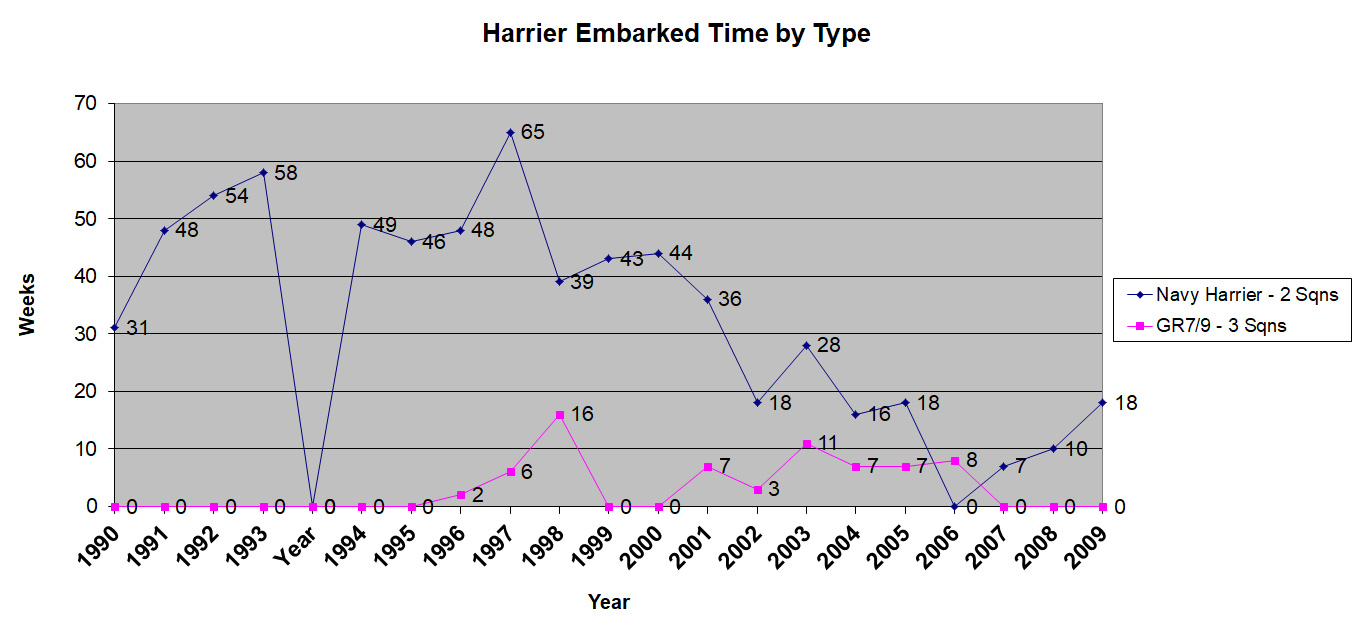The true availability of the F-35B for our two Aircraft Carriers.
- As you will be aware, the prime defensive and offensive weapon systems of our QE class Strike Carriers are their fixed wing air groups of F-35B Squadrons. Without air group embarkation, the Carriers’ Power Projection capability does not exist, and they become a liability rather than a vital asset. Military Airfields without aircraft face the same defensive/offensive capability problem.
- Recent history demonstrates the unwillingness of the RAF to support embarked fighter operations and training for the Navy and its capital warships – despite its stated commitment to do so. Examples of this are as follows:
- The decision to withdraw the Sea Harrier FA2 from Service was taken in 2002 on the misguided advice of MoD/Air (Stirrup and Bach) “that the Harrier GR7/9 would serve the offensive needs of our carriers better” (not verbatim – see DSC Minutes of May 8th, 2002). During the next 4 years before FA2 withdrawal and thereafter, the RAF Harrier Squadrons failed to embark in our carriers for more than a few weeks. The following graphic provided to me by MOD justifies this statement:

- The RAF has dispatched a small number of F-35Bs to Akrotiri in Cyprus in view of the crisis in Ukraine (hardly an effective deterrent). That means fewer jets being available for embarked carrier operations. This is a direct result of allowing the F-35B to be owned and controlled by the RAF. In the recent NATO Exercise Cold Response in the Norwegian Sea, HMS Prince of Wales was NATO’s command ship. No F-35Bs were embarked. Instead, the RAF provided just four F-35Bs to take part in the exercise, operating not from the Prince of Wales, but from RAF Marham – with very little time on task. So, Prince of Wales, the NATO Strike Carrier Command Ship, had no fighter air defence aircraft on board. So much for inter-service Cooperation!
- The critical point here is that when the RAF own a military aircraft asset, they cannot be relied upon to deploy that asset properly in time of need in support of Naval/Maritime operations, whether for peacetime exercise or in a combat theatre. This is the Achilles Heel of MOD agreeing to such ownership. It represents an egregious failure of the Joint Operations Philosophy.
- You may recall that during Operation Desert Storm, the Allied Commander, ‘Stormin Norman Schwarzkopf’ requested RAF Nimrod Maritime Support to help sanitize the waters of the Gulf in the light of threatened Iranian anti-ship mine deployment. The RAF declined, saying that their twenty-plus Nimrod MPAs were committed elsewhere. It transpired that all the Nimrods were suddenly and inexplicably engaged in a nugatory merchant ship tracking exercise between Gibraltar and the UK. It appears that they did not wish their aircraft to be vulnerable to any form of enemy action: more Joint Operation disregard – and a notable failure to stand up and be counted when it matters.
Conclusion.
- Full RAF commitment to Naval Operations and our Strategic Maritime Policy simply cannot be trusted and relied upon. Promised verbal commitment is frequently unfulfilled and this represents a major hazard to the global safety, survival and capability of the Royal Navy Fleet Weapon System.
Recommendation.
- Operational Control of all military aircraft assets procured in direct support of Maritime Operations, including F-35B and Poseidon, should be immediately transferred to the Royal Navy. Failure to accomplish this makes a mockery of the UK’s Strategic Maritime Policy and Capability.
